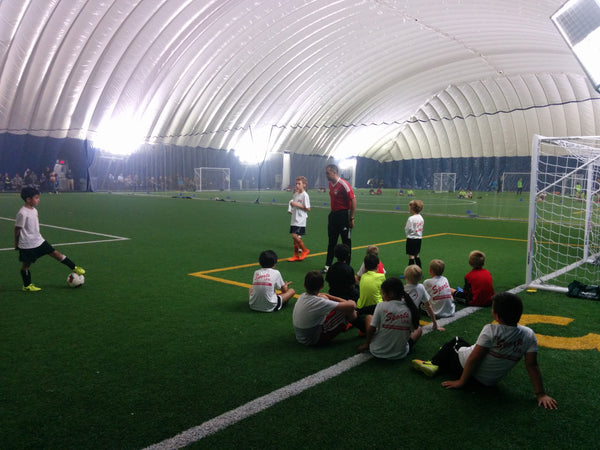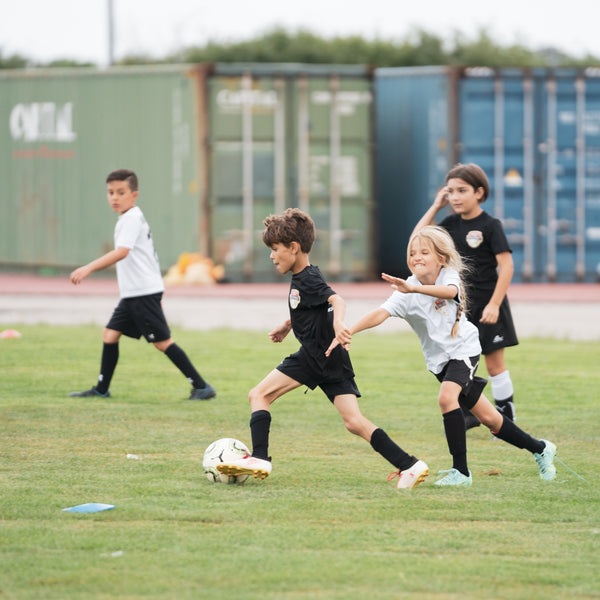
Soccer Camps - Kitchener, Waterloo, Cambridge - FFTW Development
Dear Parents/Guardians,
Hope you are all doing well.
Our fifth week is officially in the bag with all age groups working on Aerial Control.
Here are the coaching points below:
6-7/8-9 Group:
Aerial Control
- Watch the flight of the ball
- Adjust to the flight of the ball
- Figure out which part of your body you are going to control with while the ball is in the air
- Let the ball come to you, you do not reach for the ball (if you reach, the ball will bounce off you, you want the body part you are controlling with to act as a sponge)
10-13 Age Group:
Aerial Control
- Watch the flight of the ball
- Adjust your body (dependent on flight of the ball)
- Before you receive the ball, decide what surface you are going to use to control the ball (This has to be done after watching the flight of the ball and adjusting your body)
- Cushion touch: let the ball come to you, you do not reach for the ball (if you reach, the ball will bounce off you, you want the body part you are controlling with to act as a sponge)
- Travel touch: Watch the flight, adjust your body, decide which surface and take your touch into space OR if there is a defender there, in the opposite direction
- Awareness - check your shoulders, if there is a defender behind you, you need to cushion/protect the ball. If there is no defender, realize you can turn with a travel touch or a cushion/turn touch.
6-7/8-9 Age Group:
Comments from Coaches
With this age group, the goal is to keep the information simple and solely work on their body function of recognizing where the ball is and trying to meet it and then get their foot in position to control the ball. The agility of players are this age is quite slow at times and that is why it is important to work on ball/foot coordination but of course this will come with time and with the growth of awareness to things happening around them.
The key areas that players need to focus on is keeping their eye on the ball, and not reaching for the ball when it is in the air. Players will of course at the start be afraid of the ball (if they arent its a great start) and then have to get used to the ball coming down and adjusting their foot. While the ball is in the air, players will eventually need to figure out which part of their body is the best to control with but for players at this age, its just to get comfortable with the ball being in the air and controlling.
For the 8-9 group, players should have a bit more awareness and be able to handle while the ball in the air, knowing which part they will control with and knowing what is around them at the time. This means are they going to take a cushion touch which brings the ball down to their feet or have they checked their shoulders and they can take a touch into space.
10-13 Age Group:
Comments from Coaches
Overall, the group did well with the general control of using the inside of the foot and the laces control but the only thing that was missing was true consistency. It should be said that 75% of the players were able to do it on a consistent level but then would switch off once in a while. What we want it to become is second hand nature to control a ball in this fashion and not something that is just done well sometimes, but almost all of the time and this comes with practise.
The travel touches we were actually pleasantly surprised with some of the quality but the one that both age groups struggled with heavily was the cushion touch and turn. This is probably because they are not taught this regularly and its something new to a lot of players which they will need to work on. It is used in the professional came when a player wants to take down the ball directly at their feet but then wants to quickly take their touch into the space the defender is not marking.
Last but not last is the awareness of realizing what to do when there is a defender behind them and when there is not. Players were still able to take travel touches even with defenders behind them but they just need to know where the defender is exactly so they are not turning into them. This is where the use of the body is critical and also checking your shoulders as you can put your hand out and use your body weight to feel the defender and see which side they are on.
Other than these main points, the groups did very well.

